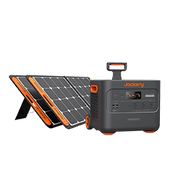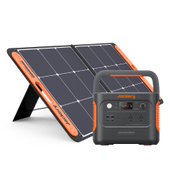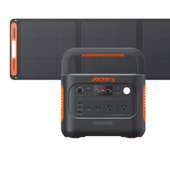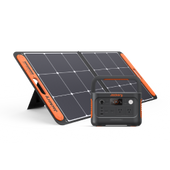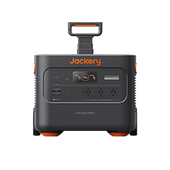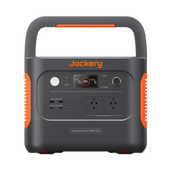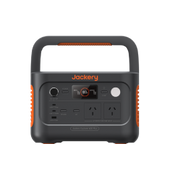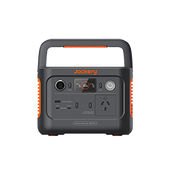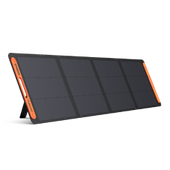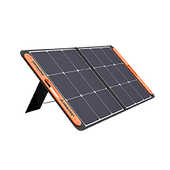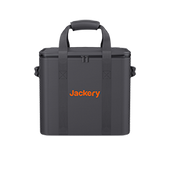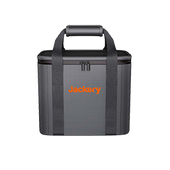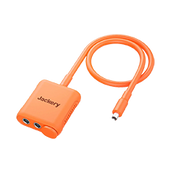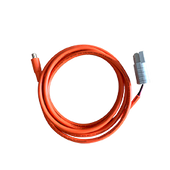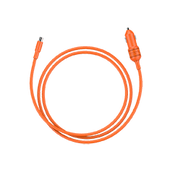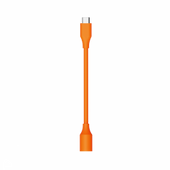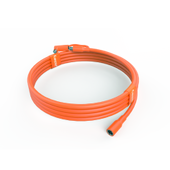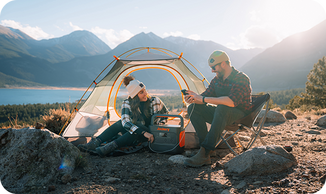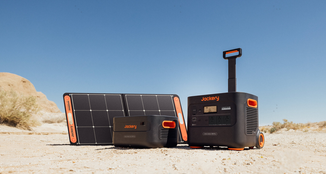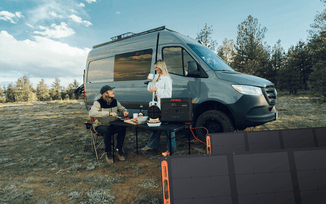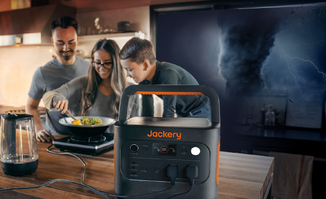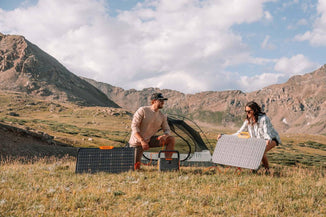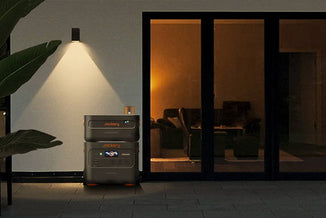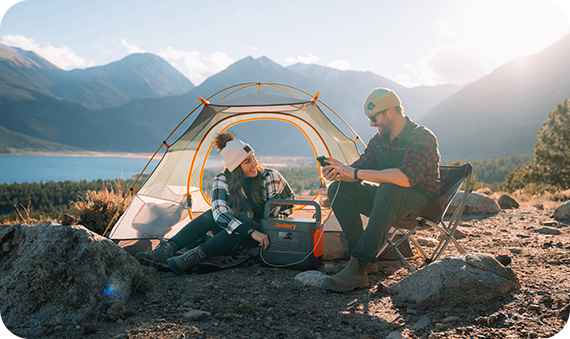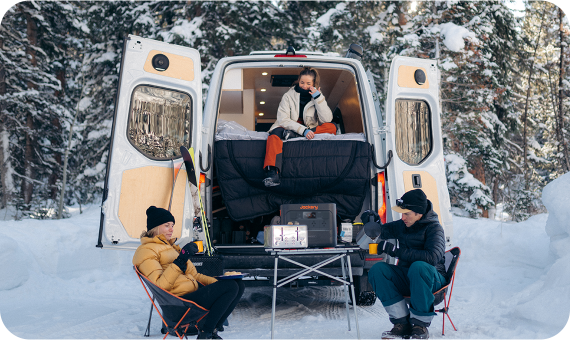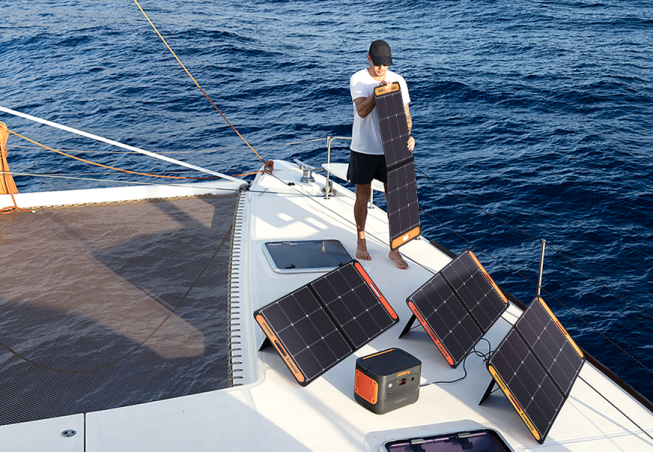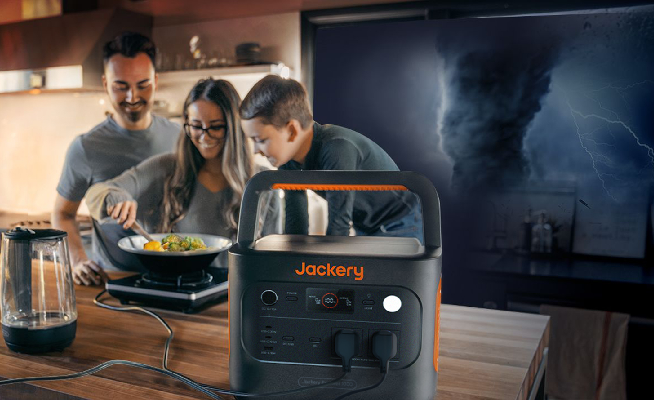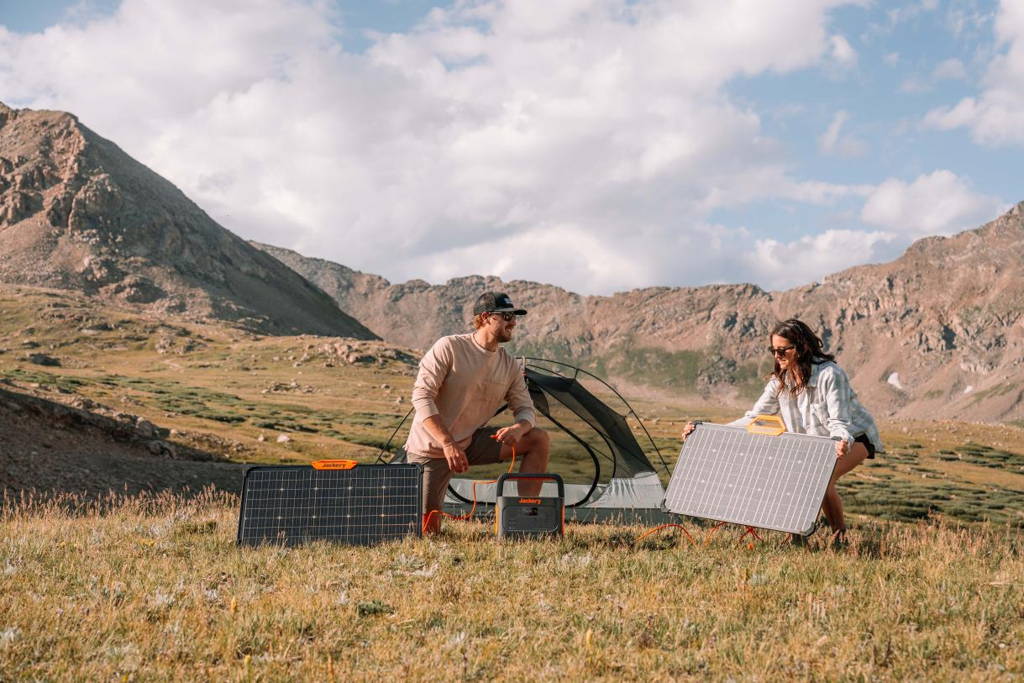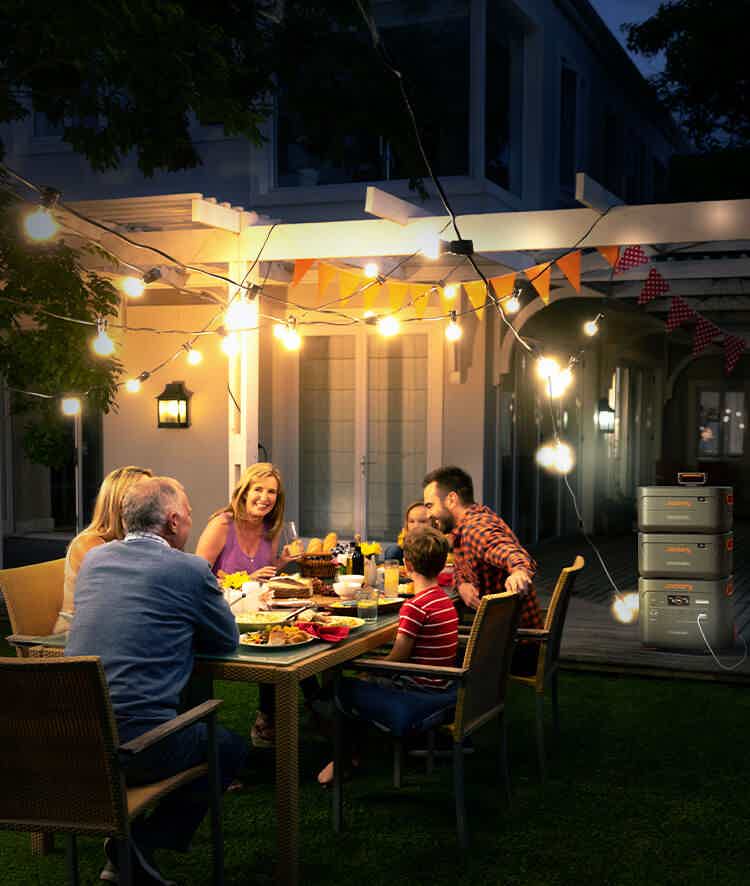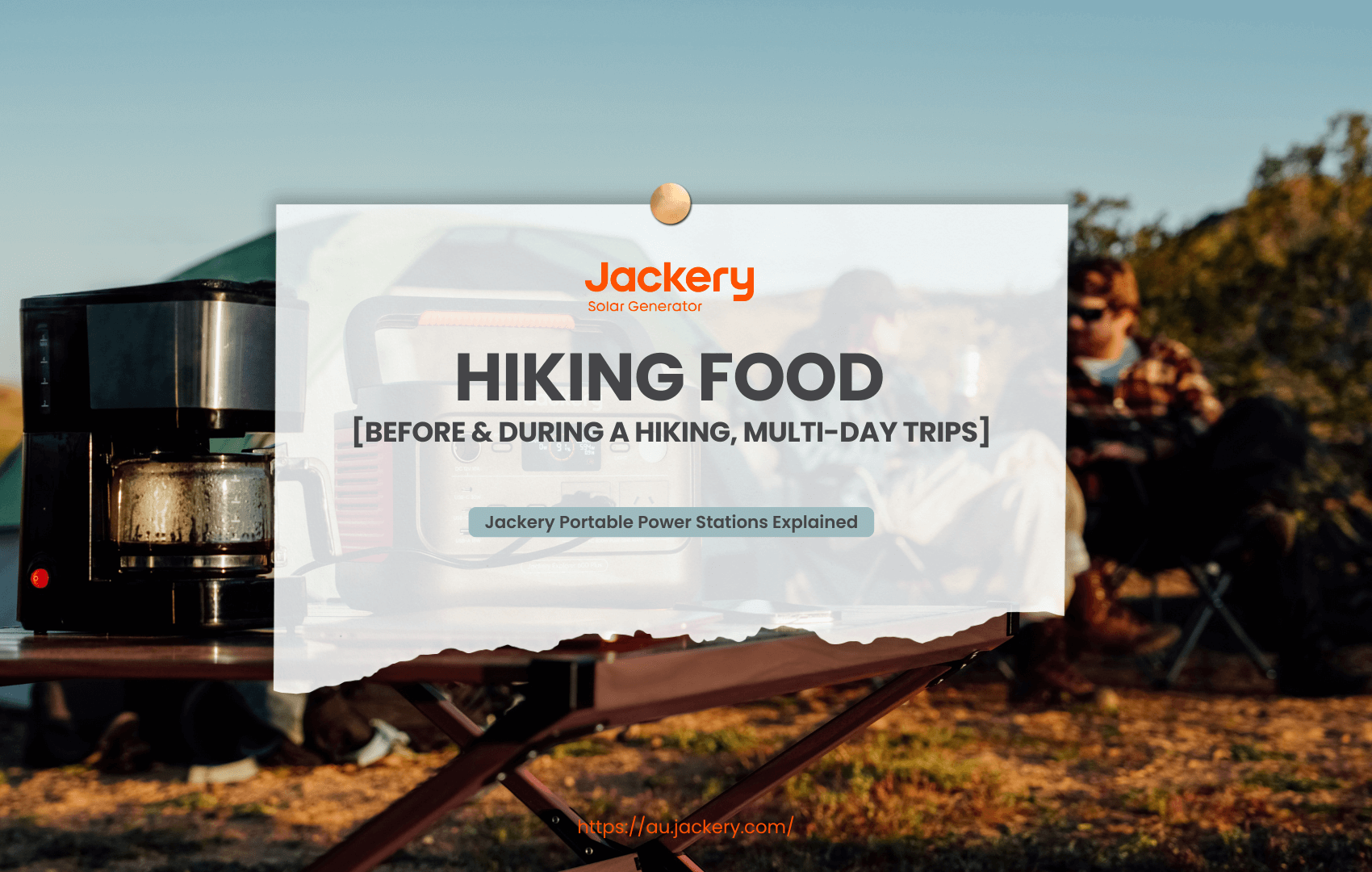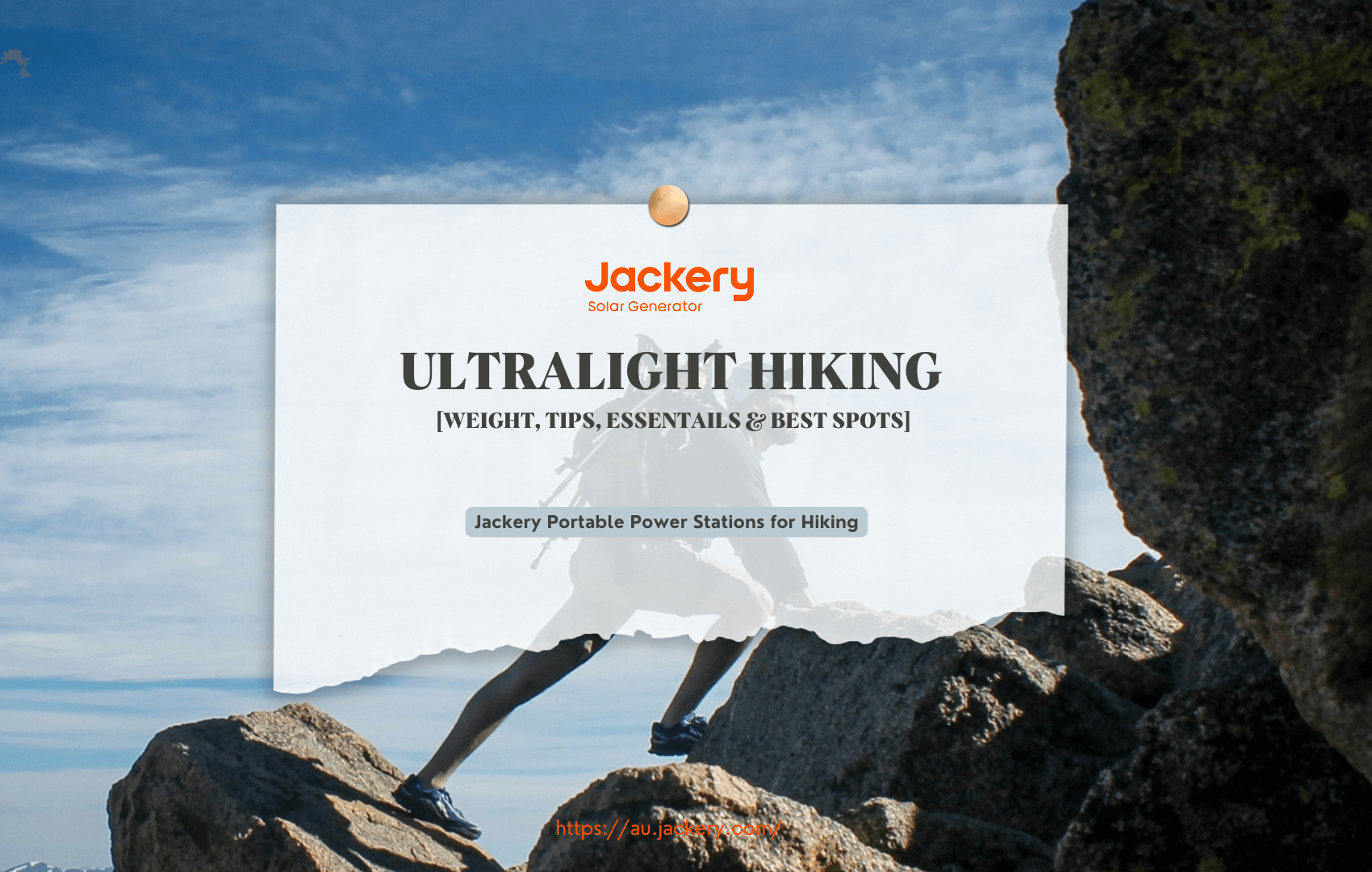|
Key Takeaways: |
|
- Choose lightweight, calorie-dense foods that are easy to carry, like nuts, jerky, trail mix, and dehydrated meals for hiking food. - Focus on protein-rich and complex carbohydrate foods to maintain energy levels during hikes and prevent fatigue. - Day hikes allow fresh options like fruit and wraps, while multi-day trips need shelf-stable, high-calorie foods that don’t spoil easily. - Ideal hiking snacks include energy bars, freeze-dried fruits, fresh veggies, cheese, and hummus for convenient and nourishing refuelling. - Bring plenty of water, including salty snacks or electrolyte powders, to maintain proper hydration and energy balance. - We recommend Jackery Explorer 1000 v2 and 300 Plus portable power stations to power your hiking electronics and devices with higher portability. |
What to Consider When Preparing Hiking Food?
Foods that give you lots of energy and make you feel full without making you feel heavy are the best to bring for a hike. For energy that lasts all day, consider foods containing complex carbohydrates and proteins rather than fatty or sugary foods that can cause you to crash or feel tired. You can get through a long day trip by eating modest, healthful snacks every few hours if you start your day with a nutritious, high-protein supper.
Food selection on a hike is highly subjective; what works for one hiker may not work for another. You have many options and are less likely to grow bored with your gear if you are only hiking for a few days. Your dietary decisions become crucial when you begin taking trips that last several days or weeks. What factors should be considered while creating a weekly hiking food plan instead of a daily one?
|
Daily Hiking Food |
Weekly Hiking Food |
|
Weight and Convenience |
Caloric Density |
|
Immediate Fuel Energy |
Weight and Packability |
|
Hydration |
Macronutrient Balance for Sustained Energy |
|
Minimal Preparation |
Food Preservation |
|
|
Does It Need Cooking |
|
|
Resupply and Water Availability |
The main distinctions between a weekly and daily walk regarding food preparation are weight, energy requirements, and food preservation. Convenience is the top consideration for a one-day trek, so portable, readily consumable snacks like trail mix, energy bars, and fresh fruit are ideal.
On the other hand, a multi-day trip necessitates careful preparation to strike a balance between nutrition, packability, and calorie density; dehydrated meals, high-energy snacks, and a dependable water source are crucial. Longer hikes require non-perishable, nutrient-dense foods that provide energy throughout time, while daily hikes permit the consumption of fresh, perishable goods.
In the end, making the correct dietary selections guarantees that you are hydrated, nourished, and ready for the demands of the path. In conclusion, for a daily hike, focus on quick, fresh, and convenient foods, while for a weekly trek, prioritise calorie-dense, lightweight, and long-lasting meals.
What to Eat Before a Hike?
Eat a satisfying and healthful breakfast before going on your hiking adventure. Fueling up with proteins and carbs can help you conquer any mountain, whether going on a long trek or a quick day hike.

Complex Carbohydrates
Complex carbohydrates are beneficial for high-energy exercises because they break down slower than simple carbohydrates. Before going on a hike, adequately fuel your body with high-energy foods. A bowl of whole-grain pasta might be an excellent method to replenish carbohydrates. Combine lean meats and veggies for a balanced and protein-rich lunch.
Choose a light spaghetti sauce over a thick cheese sauce, and keep your portion size acceptable. While pasta is high in energy, eating too many carbohydrates may cause you to gain weight.
Lasting Energy
Fats are useful for breakfast due to their capacity to release energy slowly. Nut butters are high in protein and fibre, which promotes overall health and muscle strength. Nut butter, such as almonds, cashews, pecan, and conventional peanut butter, comes in many flavours to suit your preferences. Nut butter can be spread on whole-grain toast or blended into your morning porridge to provide an ideal balance of carbohydrates, lipids, and proteins.
High Protein
Lean meats, such as poultry or fish, are high in protein and low in fat. Protein is an essential macronutrient for increasing metabolism and building and repairing muscles. When camping for a long time or climbing challenging peaks, your muscles will appreciate you for the support.
Other Recommendations
Eggs: Eggs, which are high in protein and easy to prepare, are another excellent choice for a pre-hike breakfast. A big egg has approximately 77 calories and 6 grams of protein, making it highly nutrient-dense. Eggs contain B vitamins and amino acids that promote energy production. Eggs have a high percentage of leucine, which promotes muscle recovery and can be suitable for endurance exercise. Integrating eggs into your diet may help you gain endurance and strength when preparing for a long hike.
Fruits and Vegetables: Fruits with a high carbohydrate content and pleasant natural sugars make an excellent snack for hiking. Instead of a candy bar, opt for a crisp apple with 25 grams of carbohydrates and 4 grams of fibre, providing a steady release of energy. Like fruits, many veggies include healthful complex carbs.
Sweet potatoes are rich in carbohydrates, fibre, and manganese, providing 50% of the daily recommended dosage per serving. Manganese is a mineral that promotes metabolism and glucose breakdown. Carrots, dark leafy greens, and beetroots are also excellent pre-hike vegetables. Carrots are an excellent choice for a more extended hiking trip because they last longer without refrigeration.
Lunches During Your Hiking Trip
A solid supper before hiking should keep you energised. Refuelling on a walk is still crucial. Bring adequate snacks for every two hours. Consuming nutrients consistently can keep you energised on your walk. Hiking foods that are easy to eat without cooking are preferable. On a multi-day walk, a fast meal without unpacking will be welcome. Here are some great hiking foods:

Wraps: Bread wraps are a straightforward and speedy option for lunch.
Energy Bars: Nutrition bars are small and can provide a lot of protein and carbohydrates. Look for bars with vitamins, minerals, and healthy fats. Choose bars with primarily natural ingredients and no added sugars for the best results.
Freeze-Dried Fruits and Vegetables: Dried or freeze-dried fruits and vegetables are ideal for travelling with minimal space. Dried fruits taste like candy without the sugar and are rich in vitamins and minerals. Seaweed is an excellent dried vegetable because it's light, crunchy, and tasty.
Fresh Fruits and Vegetables: When going on day hikes or on the first day of a backpacking trip, a nutritious snack that you may bring with you is fresh fruits and vegetables. While climbing the mountain, you can have a tasty and refreshing treat by including some carrots or celery in your pack.
Fish: Salmon may be purchased in foil pouches at most larger supermarkets, and these pouches have become highly popular with hikers as a lunch and supper choice. Both lunch and dinner options are available.
Energy Chews or Gels: Energy chews and gels give the same advantages as nutrition bars but are smaller and faster to ingest. Energy chews taste like gummies and contain minerals and electrolytes. Energy gels and chews provide a rapid calorie boost during long camping trips.
Hummus: One of the most energising and nutritious snacks for hiking is hummus, which is packed with calories, carbohydrates, fibre, and protein. Hummus is delicious when combined with fresh vegetables and may also be spread on crackers, tortillas, or bagels.
Jerky: Jerky is small and protein-rich, making it ideal for lengthy excursions. Jerky comes in turkey, salmon, beef, venison, and practically any flavour.
Cheese: Like many of these recommended items, cheese is nutrient- and calorie-dense and a fantastic source of protein. Cheese pairs nicely with fresh fruits and vegetables, jerky or crackers for a simple snack or can be added to nearly any meal for extra richness and taste.
Dinners During Your Hiking Trip
You will probably return to your campsite or home at the end of a day hike, but on a backpacking trip, you will finish each day on the trail. For multi-day hikes, prepare wholesome and substantial meals for dinner to help rebuild your muscles and replenish your body, though you will still be restricted to what you can pack in your backpack.
Dinner is when you can savour a warm meal prepared over the fire. What you eat for dinner on an Australian hiking trip depends on your level of remoteness, the length of your hike, and your ability to prepare meals. Here are some good choices for various circumstances:
If You Have a Camp Stove or Can Make a Fire:
Dehydrated Meals: They are simple to prepare with hot water yet are light in weight and high in calories.
Pasta or Instant Noodles: Use powdered soup mix, pre-cooked vegetables, or tuna sachets to increase the nutrients in your meal.
Couscous or Instant Rice: For speedy cooking, combine with freeze-dried meat, curry powder, or dried vegetables.
Pre-made Curry or Stew Pouches: Like the rice and sauce packs sold by Uncle Ben's or the meal bases sold by Passage to India.
If You Don't Have a Way to Cook:
Wraps with Shelf-Stable Fillings: Use ham, cheese, salami or tuna sachets, along with tortillas and peanut butter or honey.
Cold Soak Meals: Cold water can be used to soften couscous, quick oats, or ramen before it is consumed. Include some dried fruits, nuts, seasoning, or olive oil in the mixture.
Snacks as Dinner: Chocolate, trail mix, jerky, granola bars, nuts, and dried fruit can be some examples.
How to Prepare for Multi-Day Hiking Foods
Food packing for days at a time is a little more difficult. If you have a cooler, you can consume perishables on the first day, but after that, plan your meals so you have what you need and enjoy. If not, add any of these readily packed, shelf-stable essentials to keep you going:

Tip 1: Pack Lightweight, Easy-to-Carry Food
Choose light and compact foods, such as freeze-dried or dehydrated meals, as well as other dry foods and snacks, to reduce the amount of weight carried in your pack. In order to save even more space in your suitcase, you should repackage bulky things into plastic baggies.
Tip 2: Bring the Appropriate Amount
Calculate your daily calorie expenditure by considering your weight, the weight of your pack, the difficulty of the journey, and the amount of time you want to spend hiking each day. Bring enough food to cover all of your daily caloric expenditures if you wish to keep your weight stable while trekking.
You should always bring a little extra in case you fall behind schedule and end up spending more time on the path than you anticipated. Your body will require extra calories to stay warm when hiking in chilly weather.
Tip 3: Emphasise on Nutrition
To stay energised during your backpacking journey, choose foods that are high in protein and complex carbs. Pack foods that are heavy in calories, protein, fibre, carbs, and electrolytes because you will burn many calories daily. Stable energy foods will also keep you feeling full without making you feel heavy or causing you to crash.
Tip 4: Choose Foods That Are High in Nutrients
You should choose foods that are high in calories and nutrients while taking up the least amount of space possible in your diet. The foods ideal for backpacking will have a high ratio in terms of calories per ounce.
Tip 5: Make Simple Meal Plans
A hot, easy-to-make lunch will be welcome after a long walk. Plan one-pot or utensil-free meals like dried meals, rice, or quick noodles. These quick and hearty dinners require minor cleanup so you can rest for the next day on the trail. Plan simple meals with minimum cooking equipment to lighten your luggage. A modest pot can boil water for dried meals, prepare rice or pasta, and make coffee for morning energy.
How to Prepare for Day-Hike Food
The best foods to bring on a hike are those that give you plenty of energy and help you feel full without making you feel heavy. Choose foods containing complex carbohydrates and proteins for energy that lasts throughout the day, rather than fatty or sugary foods that can make you feel drained or crash. If you start your day with a nutritious, high-protein meal, you can power through a long day hike by eating small, healthful snacks every few hours.
Tip 1: Persistent Energy
Nutrient-dense diets that provide sustained energy are ideal for trekking. Choose proteins, complex carbs, and healthy fats instead of sugars, which only boost short-term energy. These foods digest more slowly and provide a continuous source of energy.
Tip 2: Freshness
Unlike multi-day hiking trips, you are not restricted to non-perishable goods when selecting meals for day treks. Your favourite sandwich for lunch or a quick and cool trail snack can be made with cheese and fresh fruits or veggies.
Tip 3: Hydration
Staying hydrated will keep you feeling great and energised. Drink water before your hike and pack enough water for the entire day. If it's cold, you'll feel less thirsty, but be careful not to drink too much water because that can cause water poisoning, which is just as dangerous as dehydration. You should also eat salty snacks and drink water daily to stabilise your sodium blood levels.
P.S. Depending on the length and difficulty of the hike, figure out how much food and water you'll need, and then bring a little extra. Be ready with adequate water and snacks to keep your body fuelled because you will exert yourself all day.

How to Keep Your Hiking Food Fresh with Jackery
The most efficient way to keep your hiking food fresh is to take a portable fridge or portable cooler. Using Jackery Portable Power Station can power your portable fridge even outdoors, especially for some multi-day hikes.
Many efficient 12V portable refrigerators and freezers are available that can run directly off the DC car outlet or a DC-to-DC cable connected to your Jackery. These can maintain temperatures within a safe range for perishable items like meat, dairy, and leftovers.
Choose a fridge/freezer with low power consumption to maximise run time on your Jackery. Check the cooler's wattage and estimated amp-hour draw and compare it to your Jackery's capacity. Higher capacity Jackery models (like the Explorer 1000 v2) will provide longer run times.
If you're on a longer hike with a base camp, a Jackery can power a small, portable induction cooktop. This allows you to cook fresh meals with packed ingredients, reducing reliance on pre-packaged or dehydrated food for every meal. Cooking fresh ensures better taste and nutritional value. Here, we recommend the Jackery Explorer 1000 v2 for multi-day hiking trips and the 300 Plus for day hikes.
|
Hiking Electronics & Devices |
Running Time |
|
|
Jackery Explorer 1000 v2 |
Jackery Explorer 300 Plus |
|
|
Portable Refrigerator (60W) |
11.7H |
3.5H |
|
Portable Cooler (150W) |
5.3H |
1.5H |
|
Flashlight (5W) |
43.9H |
16.4H |
|
Portable Induction Cooktop (1000W) |
0.9H |
/ |
|
Vacuum Sealer (240W) |
3.4H |
1H |
(*The working hours are only for reference; the actual working hours depend on your usage.)
Jackery Explorer 1000 v2
The Jackery Explorer 1000 v2 Portable Power Station is engineered for mobile energy solutions. Weighing about 23.8 lbs and equipped with a compact foldable handle, it is more lightweight and portable than conventional items. Besides, it is 20% smaller and 10% lighter than mainstream products. This powerhouse conveniently fits into the back compartment for effortless storage, which is perfect for multi-day hiking trips.

With a robust 1500W AC output and a surge peak of 3000W, this device can support various hiking appliances, including a portable fridge, light, cooktop, etc. The device includes 100W PD Fast USB-C charging (both input and output) for efficient recharging, possesses a substantial 1070Wh capacity, and is designed in a compact size to optimise space utilisation.
Jackery's upgraded Power Station exhibits a 50% enhancement in power output compared to the previous Explorer 1000 model, with an AC output of 1500W. It charges 7.5 times faster, achieving a full charge in just 59 min through the Jackery App. The LiFePO4 battery exhibits a lifespan four times greater than conventional batteries, supporting 4,000 life cycles while maintaining over 70% of its capacity.
The Jackery Explorer 1000 v2 offers rapid charging capabilities, achieving a full charge in 60 minutes when utilised with the accompanying application. The ChargeShield 2.0 system provides 62 types of safety protection and is CE-certified. It features comprehensive fire and shock resistance to ensure quality and optimal safety.
Jackery Explorer 300 Plus
The Jackery Explorer 300 Plus Portable Power Station redefined charging performance and portability. Designed for maximum convenience, this ultra-lightweight power station weighs only 3.75 kg, making it easy to put in your bag for outdoor activities like hiking. With a 288Wh capacity and 300W output, its small form doesn't sacrifice power to keep your vital gadgets operating efficiently.

The 300 Plus's state-of-the-art features guarantee adaptability in a range of situations. Laptops, tablets, and smartphones can all be charged quickly and simultaneously thanks to its dual USB-C connectors, which have an output of up to 100W. There are four different ways to charge it: solar, AC wall socket, vehicle port, and USB-C. It is also whisper-quiet and emission-free,
making it convenient and environmentally friendly.
With an LFP battery with an amazing 10-year lifespan and over 3,000 cycles to 80% capacity, the Explorer 300 Plus is made to last. Its design places a strong emphasis on safety, with 52 layers of protection against short circuits, overvoltage, and other hazards provided by the cutting-edge ChargeShield Technology. This portable power station offers dependable and secure energy options that fit your lifestyle, whether you're fishing or getting ready for emergencies.
Hiking Foods FAQs
The following are the frequently asked questions about hiking foods:
1. What is the best food to take on a hike?
The greatest meal for a hike is light, energy-dense, and easy to eat on the go. Trail mix, nuts, and dried fruits are a fantastic source of healthy fats, protein, and quick-digesting carbohydrates for long-lasting energy. Protein bars and granola bars are simple, no-prep solutions. Jerky provides a protein boost without adding much weight to your backpack.
Fresh fruits, such as apples or oranges, can be refreshing, but they are heavier, making them best for shorter excursions. Peanut butter or cheese with whole-grain crackers might be a more substantial snack for longer journeys. Staying hydrated is key, so bring plenty of water or a hydration pack.
2. What to eat on a 4-day hike?
For a four-day hike, you'll need a variety of lightweight, high-calorie, nutrient-dense foods that are simple to prepare. Breakfast foods such as quick oatmeal, cereal with powdered milk, and protein bars provide energy to begin the day. Tortillas with peanut butter, cheese, or tuna packs are good quick and convenient lunch options.
Trail mix, nuts, jerky, dried fruit, and energy bars are good snacks for keeping your energy up. Dinner options include dehydrated or freeze-dried meals, instant rice with beans, and pasta with a mild sauce mix. Bringing electrolyte powder for hydration and ensuring enough water supply is also required. Balancing carbs, protein, and fats will keep you powered for the journey.
3. What are good snacks for hiking trails?
Hearty veggies like broccoli, celery, and carrots survive well on the trail without refrigeration. To stay hydrated, you can also include cucumbers, mostly water. Any of these selections can be enhanced with a bit of hummus for extra protein, and you'll have a powerful trek snack.
4. What is the best lunch for a hike?
Peanut butter, tuna, cheese, and salami are all excellent and highly energetic, but your pack quickly becomes heavy. Incorporating or using only dry or dehydrated food will result in a significantly lower overall weight.
5. Why do hikers eat gummy bears?
Many people crave processed sugar while hiking, and with good cause. Gummy bears, Snickers bars, and M&Ms give the body an instant energy boost.
Final Thoughts
One of the most important aspects of a successful hiking day is meal planning! As you gain experience with day treks, it gets simpler to recall the specific needs of you and your family. The objective is to enjoy yourself, avoid stress, and continue to meet your fundamental needs while in the great outdoors by supplying food, water, and appropriate clothing and shelter. The last piece of advice I would provide is to always bring a rain jacket.

